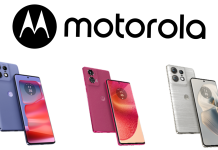In my humble opinion, Google’s Pixel 3a was the most important device of 2019: it brought exceptional camera performance to the mid-range, and completely redefined the need for a “flagship device” for the vast majority of Android users.
For those not wanting to spend $1500 AUD and above, the Pixel 3a meant great performance, excellent photos and 3 years security updates (2 years of Android OS updates) for half the price of a flagship device.
We’ve already seen leaks about the incoming Pixel 4a and, from the images, it looks to be a predictable refresh to the original mid-ranged Pixel, and that’s a good thing. The Pixel 3a’s success, as a concept – if not commercially – is a delicate balance of price and performance.
Any attempt to make it more premium would destroy its very essence. The Pixel 4a needs to maintain a very similar pricing, the same excellent camera performance and just bump up the rest of the specs where it’s needed. We do not need a all glass, face detection, Snapdragon 865 behemoth if you want that there’s the Pixel 4 line up to choose from.
While there are features I would like to see Google bring to the mid-range, such as wireless charging and WiFi 6 to continue to push hardware forward and further democratise access to technology, these features have to come along at the same affordable price.
The risk of future creep is that the price will go up $50 to $100 a year, similar to the OnePlus story. OnePlus launched as a crazy affordable high-end phone, and bit by bit the cost has risen to near-flagship prices. Not that it’s not competitive with other flagships but it’s no longer the champion of affordable great phones.
If Google maintains the same release schedule we will be seeing the Pixel 4a in about 4 months, so it’s not long to wait to find out if Google will maintain the steward of affordable tech, or will they start the slow march towards price inflation?




Hopefully, Google will not repeat the mistakes of Pixel 4: tiny battery and weak frame that causes the phone to break under pressure.
If Google could keep all the features from Pixel 3a and refresh CPU, camera and add 2Gb more RAM they’ll have a winner in the affordable (near) flagship market segment.